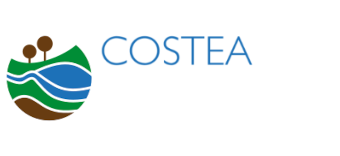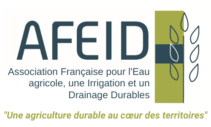Cette base documentaire a pour but de mettre à disposition la littérature grise relative aux différentes thématiques abordées dans les actions que nous portons. Elle est principalement constituée des documents collectés et/ou utilisés par le réseau COSTEA dans le cadre de la mise en œuvre de nos actions. Elle comporte des rapports d’étude, documents stratégiques, rapports d’activités, fiches techniques, articles scientifiques, thèses, articles de presse, livres, textes de loi etc. Cette base documentaire est régulièrement complétée au rythme de la mise en œuvre et de l’avancée de nos actions
Ces références bibliographiques externes aux productions COSTEA sont partagées et mises en commun à titre collaboratif. Leur contenu n’engage pas la responsabilité du COSTEA
Type de document
Thèmes
Localisation
Langue
Année de publication
de régulation des crues pour protéger les secteurs aménagés et les villes, les collectivités riveraines les considèrent comme des espaces productifs, défavorisés par les crues. L’étude montre des visions contrastées des services écosystémiques, où chaque acteur a une vision utilitariste des merjas. Malgré le débat international sur la biodiversité et le stockage de carbone dans les zones humides, les dimensions
écologiques sont peu citées. L’approche par les services écosystémiques dévoile les antagonismes entre acteurs, mais peut être un moyen de négociation sur le devenir des merjas dans une vision territoriale
groundwater recharge is generally low, leading to groundwater degradation. State responses are seldom effective in addressing this issue, which leads to fatalist narratives of the unsustainability of profitable agricultural growth and the collapse of aquifers. We argue that such narratives make it difficult to recognise more promising instances in which communities find solutions to groundwater degradation. We call for a fine-grained analysis of the social practices around the use of groundwater, which, we argue, represent a process of commoning. We do so while recognising that the collective action of communities is embedded in an intricate set of relations with other stakeholders including the state, and that the positive environmental and transformative social change that is often associated with commoning cannot be taken for granted at the outset. Building on the case of the arid Drâa Valley in Morocco where watermelon production has expanded rapidly, we illustrate how the process of commoning evolves through different social practices, including: 1) the use of new farming practices that reveal the potential of the aquifer; 2) the representation of the aquifer as severely degraded and the development of a narrative around
it being a collective good to be protected against outsiders; 3) the defining and negotiating of rules to control groundwater access and use; and 4) the engagement in negotiations and the resolving of conflicts. Our analysis shows that commoning, as performed by young local farmers, is about extending the lifespan of the aquifer for agricultural production rather than preserving it indefinitely; however, an examination of commoning practices also reveals the capacity of the community to change the course of the future.
footprints (CF) of rice products. The approach follows the principles of Life Cycle Assessment while incorporating more flexibility for activities specific to rice production. The graphical user interface provides empirical emission and conversion factors obtained from the literature and from primary research studies of rice value chains. CF-Rice also allows the entering of new values for specific processes or practices. Data outputs distinguish among the contributions of individual stages of the value chain as well as different greenhouse gases (GHG), namely, CH4, N2O and CO2. The new tool was then applied to a scenario assessment of rice production in the regional context of Southeast Asia. The CF baseline of a typical rice value chain in the region accounted for a value of around 2300 g CO2e/kgProd. The CF can be reduced by about 27.4% through water-saving practices alone and can further be reduced up to 37.3% through interventions that increase product recovery rates and, thus, reduce food losses. In contrast, straw incorporation into the soil increased the CF by 26.0%. The tool is well suited for impact assessments of advanced practices and technologies of rice value chains.



